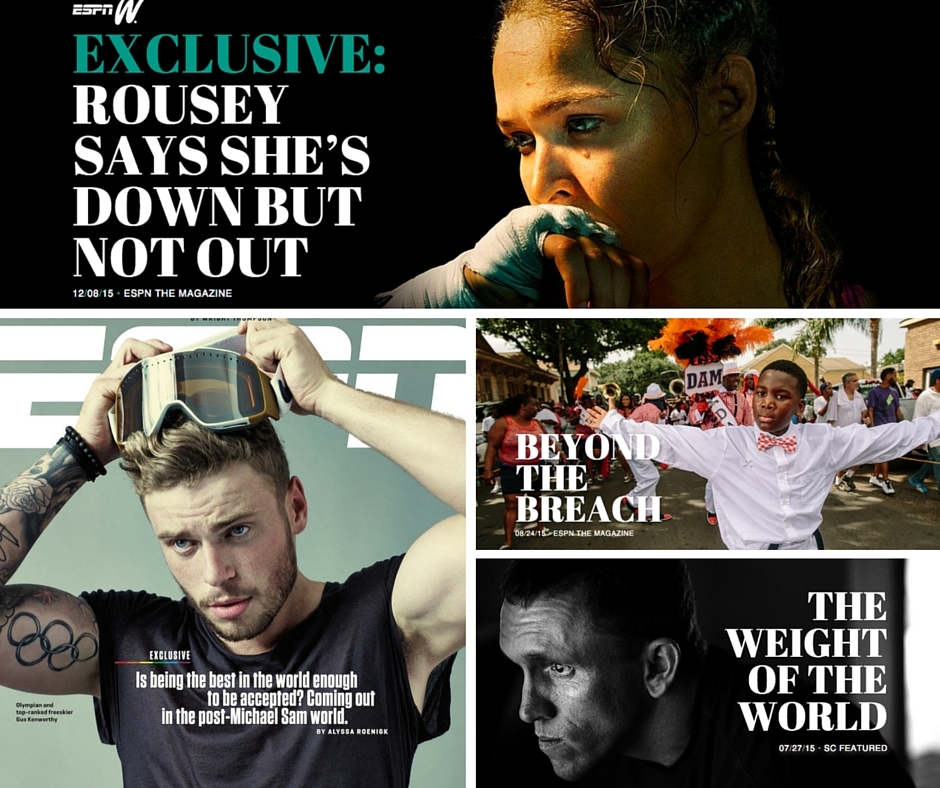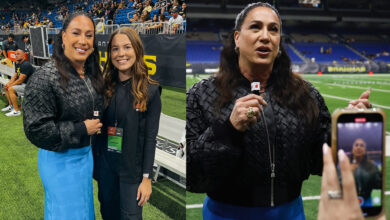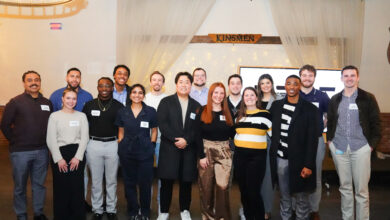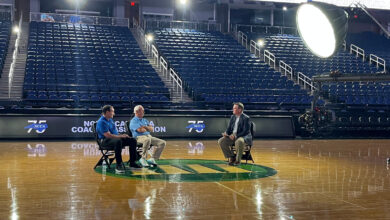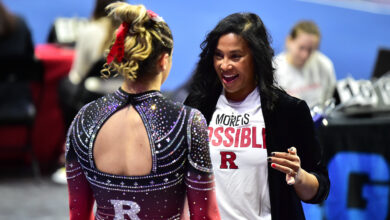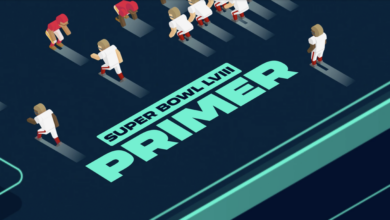A year of diverse stories and storytellers – and why that matters
The business case for news has never been greater, and the opportunity for sports journalism to more fully reflect the multicultural world of sports has never been more compelling. Today we can tell stories in myriad formats to a global audience of readers, listeners and viewers who are consuming that content in circumstances never before imaginable – and that audience is more diverse every day.
I am honored to serve as the Editorial Director for ESPN Digital & Print Media, working daily with a diverse team of award-winning journalists producing amazing work on a daily, and global, basis. At ESPN, we have the incredible opportunity to reach and engage tens of millions of people every month and delight and engage them with impactful journalism. We often discuss the imperative to serve those fans with a commitment to an array of stories that both reflects the audience, and connects them to resonant people, places and topics across multiple cultures, markets and perspectives.
As I reflect on that objective at the end of this year, a few important developments stand out.
In June, the fifth bi-annual edition of the Associated Press Sports Editors Race and Gender Report Card was released, evaluating more than 100 news organizations, including ESPN. Dr. Richard Lapchick, the author of the study and director of the Institute for Diversity and Ethics in Sport, noted that diversity across the sports journalism is still starkly lacking — with the exception of ESPN.
Said Lapchick, “ESPN has been a leader in the hiring of women and people of color in key positions,” noting:
- If ESPN sports editors of color were removed from the overall industry numbers, the percentage of sports editors of color would drop from 11.7 percent to 6.9 percent.
- If the ESPN sports editors who are women were removed, the industry numbers would drop from 8.0 percent to 3.1 percent.
- If ESPN’s male columnists of color were removed, the industry would drop from 17.5 percent to 3.0 percent.
- If ESPN’s female columnists were removed, the percentage of female columnists would drop from 13.5 percent to 2.1 percent.
I note this not to be congratulatory — though I am proud of our leadership in this area. Rather, I find it instructive.
The growth in diversity among journalists is concomitant to an increase in the types of stories that can be discovered and told about diverse topics and athletes across all sports.
At ESPN Digital and Print, the diversity of our journalists allows us to better serve a multicultural set of sports fans, amplifies our dedication to high-impact, narrative enterprise journalism and drives innovation in the ways we present content across all of our platforms.
In fact, this is true not only for the ESPN.com and ESPN The Magazine teams. It’s also the case for our colleagues at espnW, ESPN Deportes, The Undefeated and FiveThirtyEight, all of which produced a diverse and compelling body of work in 2015. Beyond that, our colleagues at SportsCenter, ESPN studio and event production, ESPN Audio and ESPN Films, among others, have likewise uncovered talented voices, compelling stories and rich content serving diverse audiences. Each was powered by a wide array of voices from various backgrounds, perspectives and experiences.
There is no better illustration of this than a cross-section of notable content from the past year, the quality of which speaks for itself. Following are just a sample of the diverse stories generated in 2015. But they are representative examples, and I hope you enjoy visiting (or re-visiting) them. They showcase the tapestry of sport and underscore our commitment to diverse stories and storytellers.
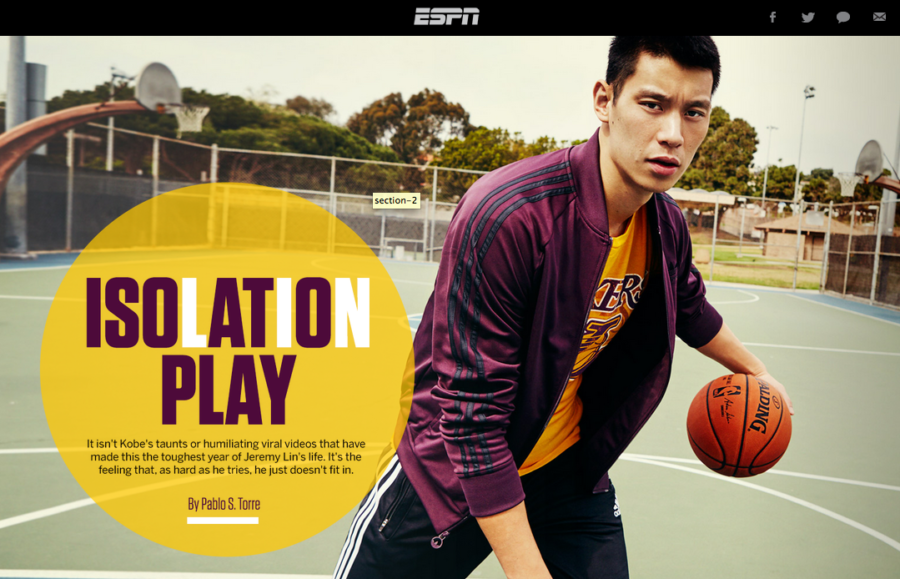
Isolation Play by Pablo Torre
Years after Linsanity, hard as Jeremy Lin tries, he can’t find a way to fit in.
The “Being Out” Issue of The Magazine
The exclusive cover story by Alyssa Roenigk about free skier Gus Kenworthy,and how he decided not to come out until he was ranked no.1 in the world. And then did it.
Beyond the Breach by Wright Thompson
A stunning single-story issue of The Magazine. Ten years after Hurricane Katrina, Thompson spent a summer in search of saints, sinners and lost souls in the New Orleans left behind.
Rousey Says She’s Down but not Out by Ramona Shelburne
In the days after her stunning defeat, Ronda Rousey says that she’s ready to fight again.
How They Do in Oxford by Kiese Laymon
The author and Ole Miss professor examines his home state’s history with the confederate flag, being black in Mississippi and how rooting for Ole Miss football made him inspect those legacies.
The Definition Of An Athlete
Samantha Shapiro, on triathlete Chris Mosier, the first transgender athlete to make a U.S. National team and the challenges he still faces to complete for his country.
Where are the Premier League’s Black Managers? by Bruce Schoenfeld
Only one of 20 Premier League managers at the end of last season were black and clubs in the world’s top league are not anywhere close to addressing racial imbalances in front offices. Why?
The Truth by Howard Bryant
The ESPN columnist’s series examining the role of race in sports and society – from Serena Williams and Viola Davis speaking out to LeBron James surpassing Michael Jordan because of his social awareness.
Christina Kahrl: Caitlyn’s courage inspires trans community
ESPN writer reflects on Jenner receiving the Arthur Ashe Courage Award, and its meaning to the transgender community.
The Weight of the World
by Tom Friend
How a chance encounter between Chevi Peters and a local police officer—shortly after Peters had nearly attempted suicide—led to Peters becoming a powerlifting Special Olympian.
Paris terrorist attacks spread fear from Stade de France by Wright Thompson
While fans believe they’re safe at live sporting events, in Paris, that belief came under attack.
Max y Marly Podcast
– The wisdom of Ron Rivera: Max Bretos and Marly Rivera spent time with the Carolina Panthers head coach ahead of his team’s game on Thanksgiving.
– Cotto-Canelo: Max y Marly discuss with Bernardo Osuna and Claudia Trejos the rich boxing rivalry between Puerto Rico y Mexico.
Why Derrick Gordon Made History – and then Shunned the Spotlight
Pablo Torre’s story about life after an athlete comes out in a high-profile way. From being embraced as a symbol to simply wanting to be a player.
Octavio Arroyo
by Eli Saslow
A top baseball prospect at a San Diego high school had been secretly commuting across the Mexican border for years until, one day, his life changed when he was caught by border patrol.
Special Olympics: the movement continues after World Games
– Complete Special Olympics coverage here.
Tony Sanchez: What it takes to be a Latino college football coach
The son of a Puerto Rican father and an English mother, Sanchez is a rarity — a Latino head coach at the FBS level. And his story is vastly different than the one told by his predecessors. + Video
USA vs Mexico: coverage from ESPN FC and One Nacion
– Cesar Hernandez shares his personal bicultural tug-of-war each time these football squads meet.
– Jeff Carlisle talks to U.S. stars who look back on the greatest moments of their rivalry with Mexico, including big flashpoints and a history of violence between the sides.
– Why Liga MX is an increasingly attractive option for American playersover some other leagues.
Remember where you Came From: Carlos Correa in Puerto Rico
We travel to Correa’s native Puerto Rico to learn more about the start of his career and inspiration
.
Video: Marlen Esparza: The boxing pioneer
She shares a passion for competition, culture and family.
True Colors
Charlie Villanueva and others explain the Afro-Latino experience.
The Prosecution of Thabo Sefolosha
On an April night in New York City, the Hawks forward was injured and arrested by the NYPD. Scott Eden’s exclusive story examined how Sefolosha became what he didn’t want to be: a civil rights symbol.
